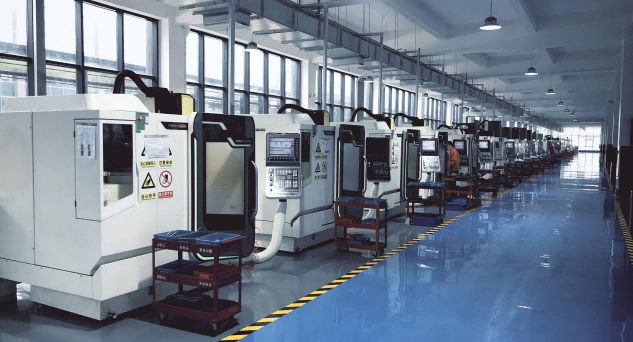Introduction
Ankle spanning external fixators serve as a critical tool for managing complex ankle fractures. These devices stabilize the joint by holding fractured bones in proper alignment. They also protect damaged soft tissues, creating an environment conducive to healing. Their design ensures stability while minimizing further injury to surrounding structures during the recovery process.
Understanding Complex Ankle Fractures
What Are Complex Fractures
Complex ankle fractures involve multiple breaks or severe damage to the bones and surrounding tissues of the ankle joint. These injuries often result from high-energy trauma, such as car accidents or falls from significant heights. Unlike simple fractures, which may involve a single break, complex fractures frequently affect multiple bones, including the tibia, fibula, and talus.
In many cases, these fractures also damage soft tissues, such as ligaments, tendons, and skin. This combination of bone and soft tissue injury makes treatment more challenging. Swelling, open wounds, or compromised blood flow can further complicate the healing process. Without proper intervention, these injuries may lead to long-term complications, such as joint instability or arthritis.
Why Specialized Treatment Is Necessary
Treating complex ankle fractures requires specialized care to address both the bone and soft tissue damage. Standard methods, such as casting or internal fixation, may not provide adequate support in these cases. Severe swelling or open wounds can make immediate surgical intervention risky.
Ankle Spanning External Fixators offer a unique solution for these challenges. These devices stabilize the fractured bones while protecting the soft tissues. By holding the bones in proper alignment, they create a stable environment for healing. Additionally, they allow surgeons to delay definitive surgery until the swelling subsides or the soft tissues recover. This approach reduces the risk of complications and improves long-term outcomes for patients.
Ankle Spanning External Fixators
Components and Design
Ankle Spanning External Fixators consist of several key components that work together to stabilize the ankle. The primary parts include pins, rods, and clamps. Surgeons insert the pins into the bones above and below the fracture site. These pins anchor the device securely to the patient’s leg. Connecting rods link the pins, forming a rigid frame that spans the ankle joint. Clamps hold the rods and pins in place, allowing for precise adjustments during treatment.
The design of these fixators prioritizes both stability and flexibility. The materials used, such as stainless steel or titanium, ensure durability while remaining lightweight. Adjustable clamps and rods allow surgeons to customize the device for each patient’s unique anatomy. This adaptability makes the fixators suitable for a wide range of complex fractures. Additionally, the open-frame design minimizes contact with the skin, reducing the risk of infection.
How They Work
Ankle Spanning External Fixators function by immobilizing the fractured bones and protecting the surrounding soft tissues. After the device is attached, it holds the bones in proper alignment, preventing further displacement. This stability creates an optimal environment for healing. The external nature of the fixator allows surgeons to monitor the injury site closely and make adjustments as needed.
These devices also play a crucial role in managing soft tissue injuries. By keeping the ankle joint stable, they reduce stress on damaged ligaments and skin. This protection allows the soft tissues to recover without additional strain. Furthermore, the fixators enable delayed surgical intervention, giving the tissues time to heal before definitive procedures are performed.
Benefits and Indications
Stability and Soft Tissue Protection
Ankle Spanning External Fixators provide unmatched stability for complex fractures. These devices hold fractured bones in proper alignment, preventing further displacement. This stability ensures that the healing process begins in an optimal environment. By immobilizing the joint, they also reduce the risk of additional damage to the injury site.
Soft tissue protection is another critical benefit. Complex fractures often involve significant damage to ligaments, tendons, and skin. The fixators shield these tissues from unnecessary strain during recovery. Their open-frame design allows surgeons to monitor the injury closely, ensuring that soft tissues heal without complications. This feature also reduces the risk of infection, as the device minimizes direct contact with the skin.
When They Are the Best Option
Ankle Spanning External Fixators are ideal for cases involving severe fractures with extensive soft tissue damage. High-energy injuries, such as those caused by car accidents or falls, often require this level of stabilization. These devices are particularly useful when immediate surgery is not possible. Swelling, open wounds, or compromised blood flow can make traditional surgical methods risky.
In such situations, the fixators act as a temporary solution. They stabilize the fracture and protect the soft tissues until the patient is ready for definitive surgery. Surgeons often choose these devices for patients with complex injuries who need a staged approach to treatment. Their ability to adapt to various fracture patterns makes them a versatile option in orthopedic care.
Risks and Comparisons
Potential Risks and Limitations
While ankle spanning external fixators provide significant benefits, they also come with potential risks. One common concern is the possibility of pin site infections. Since the device involves pins inserted into the bone, the surrounding skin can become irritated or infected if not properly cared for. Regular cleaning and monitoring reduce this risk.
Another limitation is patient discomfort. The external nature of the fixator can make daily activities challenging. Patients may experience difficulty walking or sleeping due to the device's size and structure. Additionally, prolonged use can lead to stiffness in the ankle joint, requiring physical therapy to restore mobility.
In some cases, the fixator may not provide sufficient stability for certain fracture patterns. Surgeons must carefully evaluate the injury to determine if this device is the best option. Lastly, the cost of the fixator and associated care may pose a financial burden for some patients.
Comparison with Other Treatments
Ankle spanning external fixators differ significantly from other treatment methods, such as internal fixation or casting. Internal fixation involves surgically placing plates and screws inside the body to stabilize the fracture. This method offers a more permanent solution but may not be suitable for patients with severe soft tissue damage or swelling.
Casting, on the other hand, is a non-invasive option. It works well for simple fractures but lacks the stability required for complex injuries. Unlike a cast, the external fixator allows surgeons to monitor the injury site and make adjustments during the healing process.
Compared to these methods, external fixators excel in cases where immediate surgery is not feasible. They provide temporary stabilization while protecting soft tissues, making them a preferred choice for high-energy injuries. However, they are not always the final solution and often serve as a bridge to definitive treatment.
Patient Experience and Recovery
What Patients Can Expect
Patients using ankle spanning external fixators often have questions about their experience. The device may initially feel unfamiliar due to its external structure. Most patients report mild discomfort during the first few days as their body adjusts. Surgeons provide detailed instructions on how to care for the fixator, including cleaning the pin sites to prevent infection.
Daily activities may require some modifications. Walking with crutches or a walker helps patients maintain mobility while avoiding stress on the injured ankle. Sleeping positions may need adjustment to accommodate the device. Despite these challenges, many patients find reassurance in the stability the fixator provides. Regular follow-up appointments allow surgeons to monitor progress and make necessary adjustments.
Recovery and Rehabilitation
Recovery with ankle spanning external fixators involves a gradual process. The device typically remains in place for several weeks, depending on the severity of the fracture. During this time, the bones and soft tissues begin to heal. Physical therapy often starts after the fixator is removed. Therapists guide patients through exercises to restore strength, flexibility, and range of motion in the ankle joint.
Rehabilitation focuses on rebuilding mobility and preventing stiffness. Patients may initially perform simple movements, progressing to weight-bearing activities as healing advances. Consistency in therapy sessions plays a key role in achieving a full recovery. With proper care and adherence to medical advice, most patients regain normal function over time.
Tip: Following the surgeon’s instructions and attending all therapy sessions significantly improves recovery outcomes.
Ankle spanning external fixators play a vital role in managing complex fractures. They provide stability, protect soft tissues, and improve healing outcomes. Their adaptability makes them a reliable choice for challenging injuries. By addressing both bone and tissue damage, these devices offer an effective solution for patients requiring specialized care.

